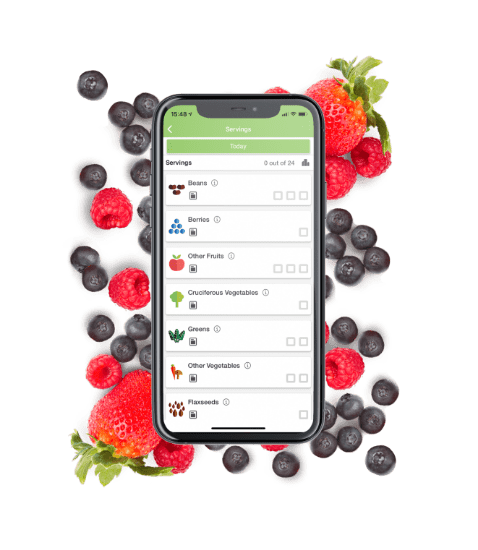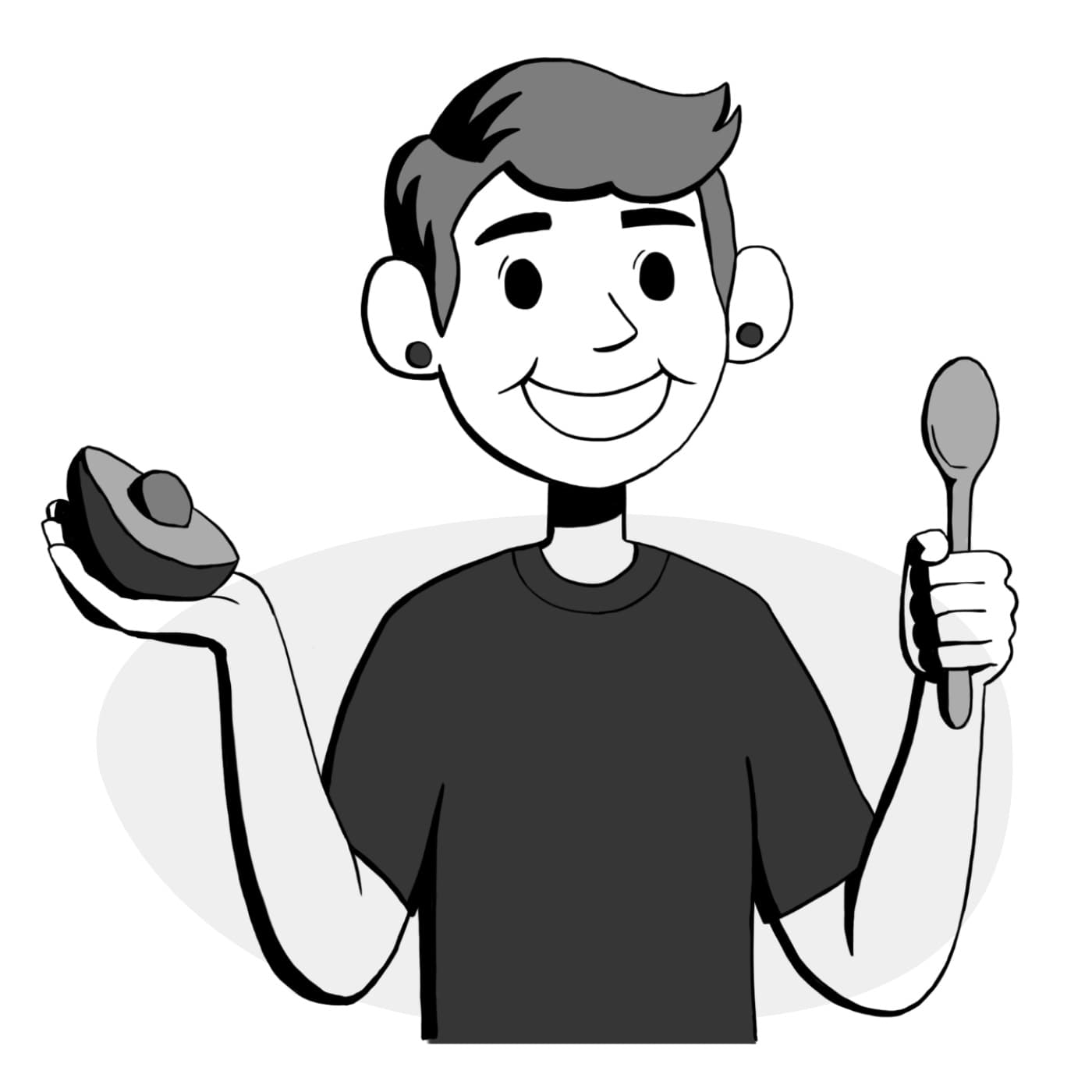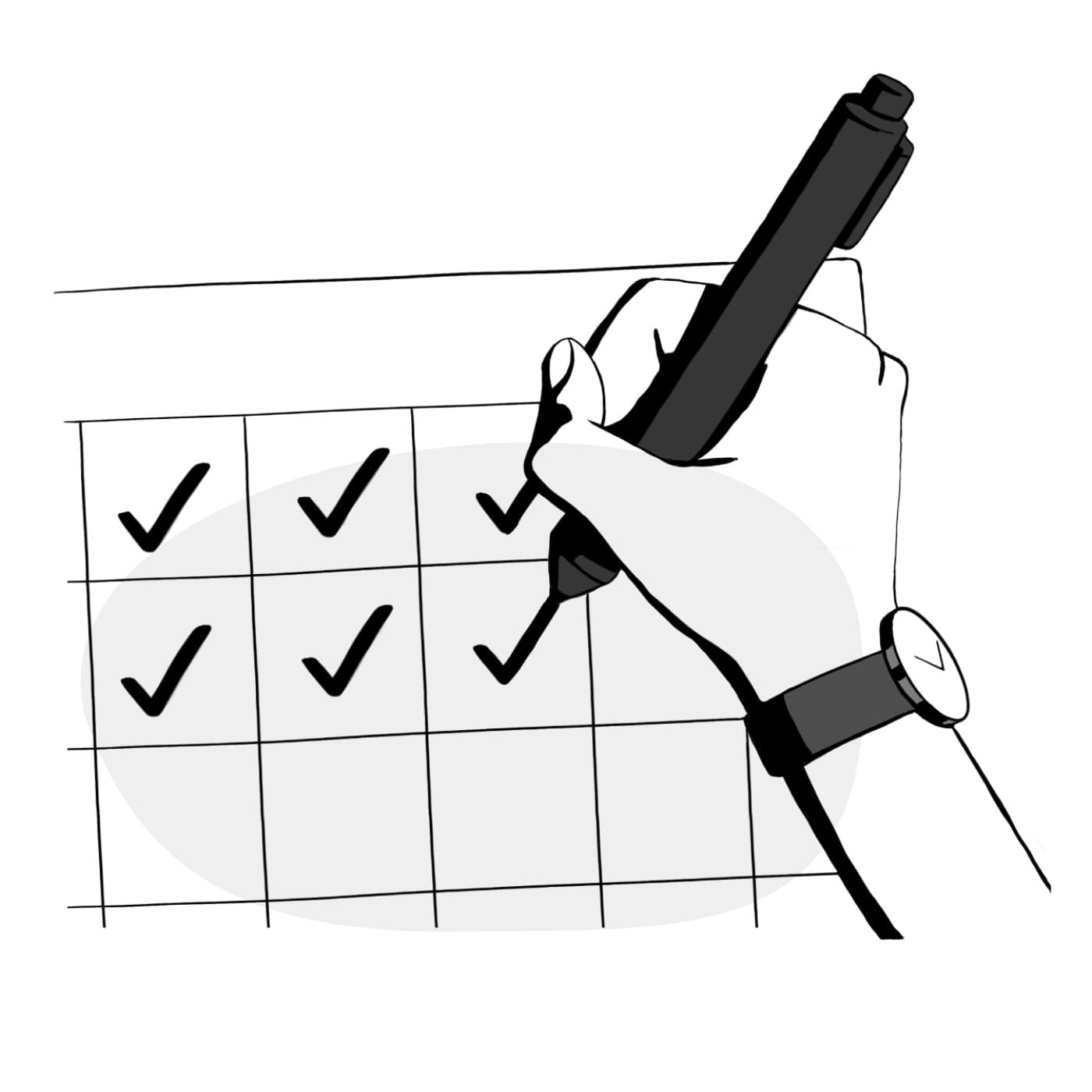


Never forget your
greens again.
Never forget your
beans again.
Never forget your
berries again.
Learn More About the App

Whole food, plant-based nutrition.
Pretty self-explanatory, right?
The more Dr. Greger has researched over the years, the more he has come to realize that healthy foods are not necessarily interchangeable. Some foods and food groups have special nutrients not found in abundance elsewhere. As the list of foods that he aimed to fit into his daily diet grew, he made a checklist that evolved into the Daily Dozen.
Dive into the science behind the Daily Dozen. Check out the videos on the topic page.
Topic Page Checklist Video
The Daily Dozen Checklist
Dr. Greger's Daily Dozen was developed based upon the best available balance of evidence. Rather than being a meal plan or diet in itself, it is simply a checklist to inspire you to include some of the healthiest foods in your diet. Our health-focused app is designed to help you think about meal planning and how you can improve the nutrient density of your menus. It is an aspirational minimum that can be customized to meet your specific needs. Think of it as your food diary.
* The Daily Dozen app now features the Twenty-One Tweaks to accelerate weight-loss, based on the research from How Not to Diet. Whether you're trying to get healthy, stay healthy, or lose weight in a sustainable way, download the Daily Dozen app and get started today. Access our Twenty-One Infographic.

1. Eat delicious meals that
include Daily Dozen foods.

2. Track your daily servings in the app.

3. Repeat the process until healthy eating
becomes second nature.
Daily Dozen Digest
Join us for 11 weeks of Daily Dozen support emails to help you Do the Dozen with ease! Each week we will send you an email with tips, tricks, facts, and tasty recipes to help you incorporate some of the healthiest of healthy foods into your daily routine.
The Daily Dozen Infographic
Our Infographic is available in multiple languages. Select your language to download the PDF.
Beans
Servings: 3 per day
e.g., ½ c. cooked beans, ¼ c. hummus
Berries
Servings: 1 per day
e.g., ½ c. fresh or frozen, ¼ c. dried
Other Fruits
Servings: 3 per day
e.g., 1 medium fruit, ¼ c. dried fruit
Greens
Servings: 2 per day
e.g., 1 c. raw, ½ c. cooked
Cruciferous Vegetables
Servings: 1 per day
e.g., ½ c. chopped, 1 tbsp horseradish
Other Vegetables
Servings: 2 per day
e.g., ½ c. nonleafy vegetables
Flaxseed
Servings: 1 per day
e.g., 1 tbsp ground
Nuts and Seeds
Servings: 1 per day
e.g., ¼ c. nuts, 2 tbsp nut butter
Herbs and Spices
Servings: 1 per day
e.g., ¼ tsp turmeric
Whole Grains
Servings: 3 per day
e.g., ½ c. hot cereal, 1 slice of bread
Beverages
Servings: 60 oz per day
e.g., water, green tea, hibiscus tea
Exercise
Servings: Once per day
e.g., 90 min. moderate or 40 min. vigorous
Vitamin B12
At least 2,000 mcg (µg) cyanocobalamin once each week (or at least 50 mcg daily), ideally as a chewable, sublingual, or liquid supplement taken on an empty stomach.
Frequently Asked Questions
Yes, the Daily Dozen is simply meant to be a guide of the healthiest foods that we strive to include every day. It's not a meal plan and is not meant to be prescriptive. Do your best to eat a diverse array of whole plant foods and adapt the Daily Dozen to the quantities that work for you.
Children, adolescents, and teenagers have different caloric needs throughout their lifecycle. These needs change to support growth and development at each stage.
The Daily Dozen was designed as a guide to help people include some of the healthiest foods into their daily routine. While the same framework can be used for most people throughout the lifecycle, the amount of food one needs to eat will vary based on a number of factors like age and activity level. Since we can't provide specific nutrition or medical advice for your growing child, parents should use this guide as they see best for their child's needs and/or consult with a registered dietitian or other healthcare provider to help determine what is best for their individual needs.
The Daily Dozen averages about 1,200 calories, but given the wide array of food choices in each category, it can range anywhere from 800-1800. Consider the Other Vegetables category: a cup of bell peppers has a much lower caloric density than a cup of cooked sweet potatoes, therefore the caloric range will depend on your specific food choices. That's the great thing about the Daily Dozen Checklist—it's not a one size fits all approach, and can be adapted to your needs.
If your goal is weight loss, you can find more information in How Not to Diet and the accompanying Twenty-One Tweaks. In How Not to Diet, I noted: “A systematic review of successful weight-loss strategies concluded that given the metabolic slowing and increased appetite that accompanies weight loss, to achieve significant weight loss, calorie counts may need to drop as low as 1,200 calories a day for women and 1,500 calories a day for men.”
On the other hand, if your goal is weight gain, then you may want to focus on adding in more calorie-dense foods, such as sweet potatoes, avocados, nuts, and soy products.
People who are pregnant or breastfeeding have different caloric and nutritional needs than people who are not. As a reminder, the Daily Dozen is not a meal plan and should not be the only foods consumed within a day. People who are pregnant or breastfeeding should consult with their health care practitioner or a registered dietician for assistance with meeting their specific caloric requirements and nutritional needs.
We have updated the Daily Dozen app to reflect only required supplements. For example, Vitamin D is only needed for people who get inadequate sun exposure. Our goal is to share the science with you so you can make your own informed decisions. You can see all of my recommendations on the Optimum Nutrient page.
That's okay! The Daily Dozen is an aspirational guide. Do your best to incorporate as many of these healthy plant foods as possible. If you are new to eating a lot of beans (or grains, greens, etc!), you may need to start with smaller amounts and slowly increase the quantity in order to give your microbiome a chance to adjust. You can also get creative: for example, add some beans to your morning oatmeal. If you load it up with berries, flax seeds, and nuts, you won't even notice the beans. You can also mash beans into a sandwich spread, or make my BROL—barley, rye, oat groats, and lentils—that I use as a base for many meals and is a simple way to get a variety of whole grains with a built-in serving of legumes.
Yes, you can look for alternatives to your allergens within each category. For instance, if you're allergic to wheat, you can still check off your grain boxes with gluten-free grains such as quinoa, oat groats, millet, etc. For nut allergies, simply eat seeds such as pumpkin, sesame, chia seeds, etc. Do your best to eat a diverse array of whole plant foods and adapt the Daily Dozen to the quantities that work for you.
More Resources
Looking to learn more about the Daily Dozen and evidence-based nutrition?
- Watch Dr. Greger's Daily Dozen Checklist.
- Watch all videos on the Daily Dozen on the topic page.
- Read Dr. Greger's books including How Not to Die, How Not to Diet and How Not to Age.
- Check out our recipe collection that uses only health-promoting ingredients based on the Daily Dozen.
- Watch free videos on more than 2,000 health and nutrition-related topics here on NutritionFacts.org.
- Download our free Evidence-Based Eating Guide, easy to understand and brimming with information on eating healthier. The resource includes a breakdown of Dr. Greger's Traffic Light Eating, tips for using Dr. Greger's Daily Dozen checklist, sample menus, and more.
- Sign up for the Daily Dozen Digest for 11 weeks of emails to help you Do the Dozen with ease.
100% of the proceeds Dr. Greger receives from all his books are donated to charity.

Please support our work by making a contribution today so we can continue to develop resources like the Daily Dozen.


